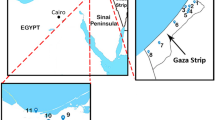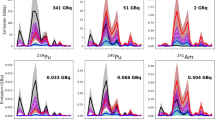Abstract
The fallout from the nuclear reactor accident at Chernobyl has been monitored at Studsvik, the Swedish energy research station located 75 km south of Stockholm. Here we present initial results of several different types of measurement. Gamma-ray spectrometry of samples of air, grass and milk reveals sixteen different nuclides, mainly volatile fission products. Radioactive particles up to ∼1 μm in diameter have been collected and analysed by electron microscopy; their form and composition lead to an estimate of ∼2,500°C for the temperature in at least part of the reactor core. The level of radioactivity in air has decreased from initial values of a few becquerels (disintegrations per s) per m3, to very low values, and the activity level on grass is also decreasing due to decay and weathering. The radiation doses due to the fallout will be small compared with those from natural sources (such as radon emission in buildings), and will not cause significant health effects.
This is a preview of subscription content, access via your institution
Access options
Subscribe to this journal
Receive 51 print issues and online access
$199.00 per year
only $3.90 per issue
Buy this article
- Purchase on SpringerLink
- Instant access to full article PDF
Prices may be subject to local taxes which are calculated during checkout
Similar content being viewed by others
References
Hoffman, F.O. & Baes, C.F. III Oak Ridge natn. Lab. Publ. No. NUREG/CR-1004, ORNL/NUREG/TM-282 (1979).
Bergström, U. & Wilkens, A.-B. Studsvik Energiteknik AB Preprint No. NW-82/311 (1982).
Int. Comm. Rad. Protection Publ. No. 30, Pt 1 (1979).
Author information
Authors and Affiliations
Rights and permissions
About this article
Cite this article
Devell, L., Tovedal, H., Bergström, U. et al. Initial observations of fallout from the reactor accident at Chernobyl. Nature 321, 192–193 (1986). https://doi.org/10.1038/321192a0
Received:
Accepted:
Issue Date:
DOI: https://doi.org/10.1038/321192a0



